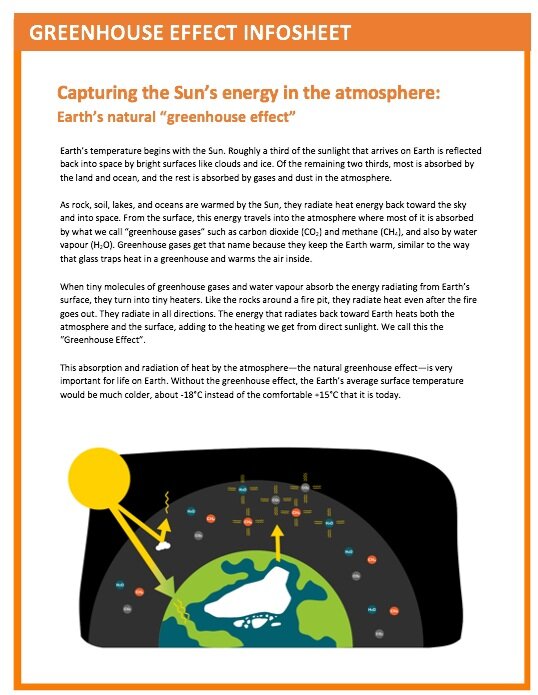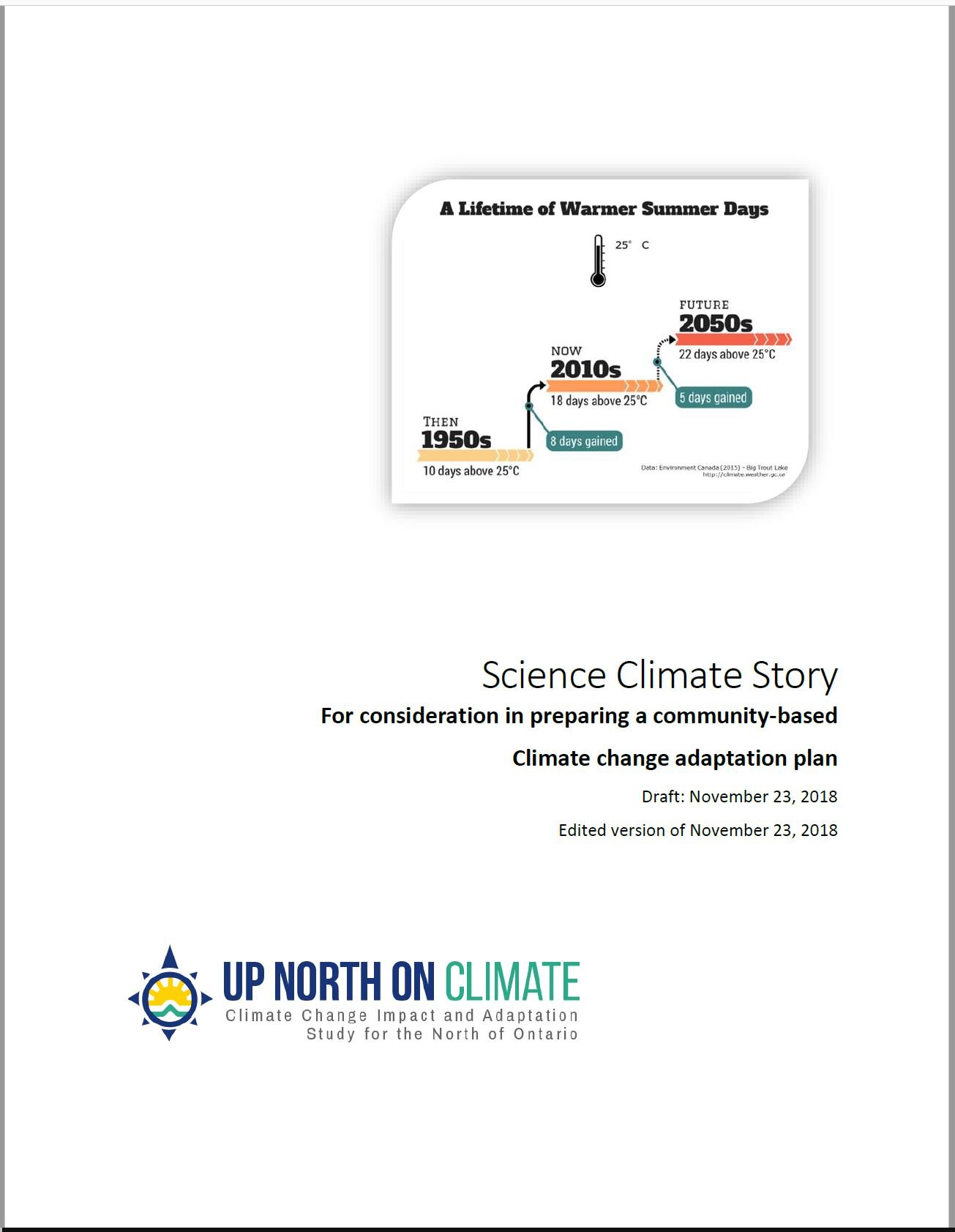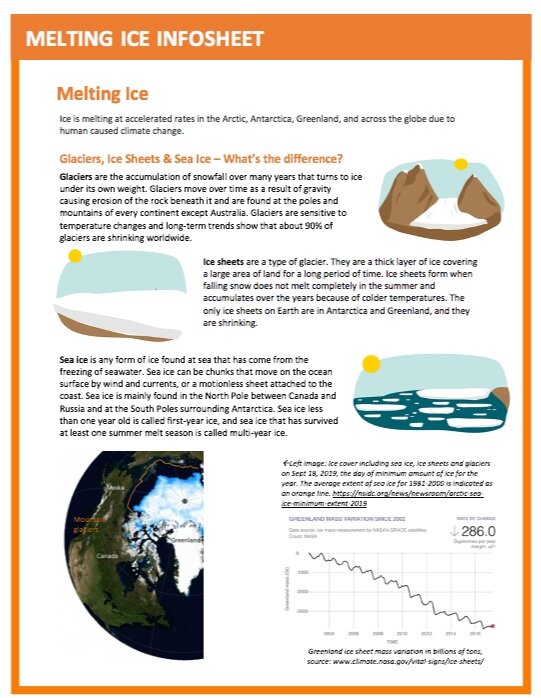"We only get one planet, just like we only get one mother.
Once your mother's gone, you don't get another chance.
It's the same with the planet."
The weather in northern Ontario is shifting. These changes are reflected in both Indigenous Knowledge and scientific findings. Humans are causing the Earth's climate to change faster than in the past.
Human-caused global warming is leading to climate change
The atmosphere is like a blanket that is wrapped around the Earth. It protects the planet and normally keeps us at a comfortable average temperature of 14°C.
Human activities, like burning coal and gas, add greenhouse gases like carbon dioxide to the atmosphere. The more these gases build up in the atmosphere the more heat is trapped, the same way more heat is trapped under a thicker blanket.
This heats up the atmosphere and raises Earth’s temperature – what is called global warming.
This human-caused global warming is happening 30 times faster than natural periods of warming that happened in the past.
Climate change describes all the changes that are happening because humans are warming the planet.
As the Earth gets warmer, the air patterns and ocean currents that drive climate can change. This affects things like how hot or cold places are, how much rain or snow falls, how severe storms are, or how often and where storms happen.
GLOBAL WARMING
CLIMATE CHANGE
Explore the Climate Change Quick Guides
Select an image to download the PDF and read the topic Q&A
Impacting climate in the North - Hudson Bay and the Polar Front
A shorter ice cover season on Hudson Bay is causing less cooling and more warming
NASA IMAGE NOVEMBER 14, 2005
NASA IMAGE APRIL 20, 2006
Every year, Hudson Bay shifts between being dominated by ice to being dominated by open water.
In November, the Bay is still open having absorbed the Sun’s warmth all summer. The water is radiating heat into the cold air.
As temperatures drop, thick sea ice forms and covers the Bay during winter. The Bay is still ice covered at the end of April.
The ice breaks up in May and June, and by August the Bay is typically ice-free open water.
But warmer temperatures from climate change are leading to less sea ice and causing the ice cover season on Hudson Bay to shorten by 20 days since the 1980s and 90s.
Why does ice cover matter?
Hudson Bay affects temperatures as far as 500 km inland. Cooling in spring and summer comes from cold sea breezes blowing in from the ice on the Bay.
When the ice cover season is cut short, there is less cold wind blowing south. This leads to warmer temperatures in areas like northern Ontario, affecting the plants and animals that live there.
A longer open water season also makes the Bay continue to warm. In the past, water temperature would reach about 9°C in late summer, but has recently reached as high as 12°C. This is because the dark colour of the water is better at absorbing the Sun’s energy, while white sea ice better reflects that heat.
Changes in the polar front and jet stream impact weather in the North
Cold air sits over the north end of the Earth while warmer air sits over the Equator. Where the cold Arctic air meets the warmer air to the south is called the polar front, and is accompanied by the polar jet stream, high speed, high altitude winds that circle the northern half of the planet.
The polar front and the jet stream play an important part in the weather patterns of the northern hemisphere. But research suggests that warming in the Arctic can alter the polar jet stream, changing its shape to become more wavy or slowing it down to a near stop. Like a loose bike chain, the jet stream becomes more wobbly, causing cold polar air to move further south in some areas and warm southern air to move further north in others.
These changes can cause places to be unusually warm or unusually cold (like in February 2021 when it was -17°C in Texas and 0°C in Fort Severn, the most northern community in Ontario). It can also cause quick changes in weather from one day to the next (like winter temperatures swinging from -25°C to -5°C) or cause prolonged hot or cold spells as the movement of the jet stream slows.
Read more about climate change in these InfoSheets and The Science Climate Story
The Science Climate Story discusses how the north has been shaped by an icy past and how the warming we are seeing now is 30X faster than natural periods of warming. It explains how the increase in the burning of fossil fuel has lead to an increase in the greenhouse effect. The projected climate for the north in 2050 and beyond is also discussed.
























